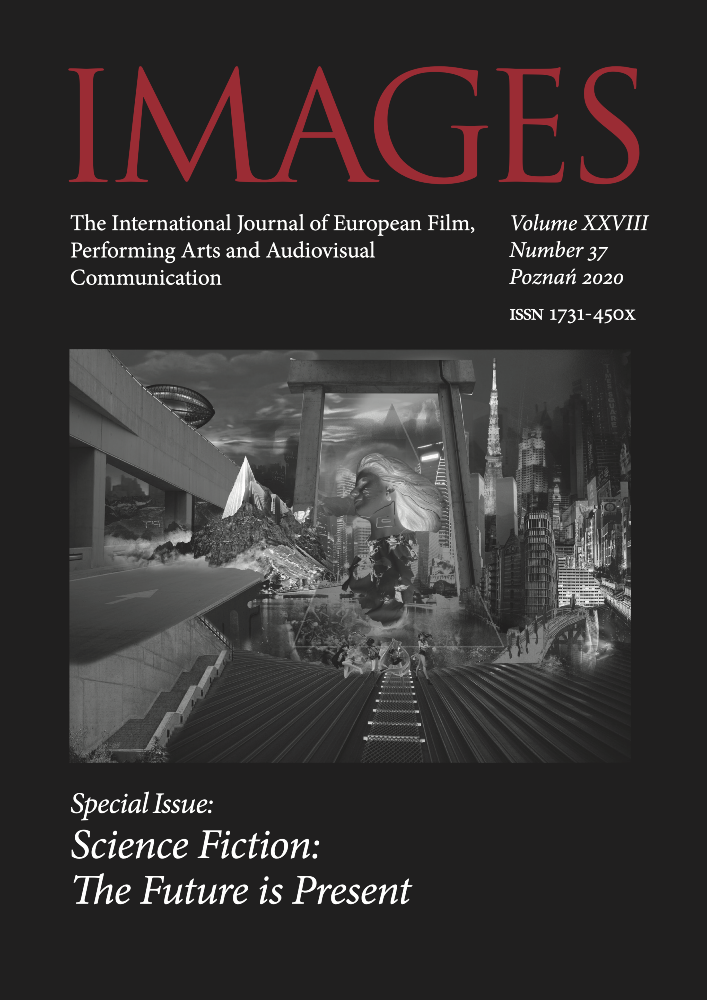Abstrakt
The essay aims to reveal the role of music in the movie Interstellar by Christopher Nolan and its significance in creating an artistic message that relates to the love myths characteristic of European culture and art. The orientation point is the Tristanic myth and the project of musical dramaturgy by Richard Wagner, the founder of the concept of music being the significant layer in a Gesamtkunstwerk, a synthesis of the arts, which strongly inspires i.a. cinema. The article ponders possible messages to be decoded from the music in Nolan’s movie: as a “form of a lover’s discourse” (R. Barthes), “significant form” (Suzanne K. Langer), “symbolic form” (E. Cassirer), responsible for shaping the ambience that constitutes an inherent structural part of the movie in the metaphysical cinema genre. The musical solutions applied by Hans Zimmer in the soundtrack to Nolan’s movie do more than merely imply inspiration from Wagner. They also allow for recognition of the polyphonic way of constructing formal and thematic relations between musical themes and the verbal-visual layer of the movie. This refined artistic project aims at a subtly directed confrontation with the nihilistic picture of love that is representative of melancholic-pessimistic images of the condition of human relationships in the modern culture. The analysed main musical theme, called the “à rebours chord” (i.e. anti-Tristan chord), turns out to be an overt musical manifestation of such a counterpunch and becomes a starting point to telling a story that refers to the concept of love which assumes taking action and fighting for the good of your loved ones, as well as the concept of Caritas and unconditional love. The way that the music and sound of the movie are orchestrated is therefore tightly coupled with its semantic and symbolic message, which allows for perceiving the music as a specific “libration point” of the movie structure. Its function might also be interpreted as a semantic attribute of “a spiritual intelligence”, referring to that which is binding and crucial for the axiological and metaphysical message of the movie.
Bibliografia
Bablet D., Rewolucje sceniczne XX wieku, przeł. Z. Strzelecki, K. Mazur, Warszawa 1980
Barańczak S., Nie wchodź łagodnie do tej dobrej nocy, <https://www.e-mlodzi.com/wiersz-dylana-thomasa-vt45483.htm>, dostęp: 13.07.2020
Barthes R., Muzyka, głos, język, przeł. K. Kłosiński, „Pamiętnik Literacki” 1999, z. 2
Berger K., Potęga smaku: teoria sztuki, przeł. A. Tenczyńska, Gdańsk 2008
Cassirer E., Esej o człowieku. Wstęp do filozofii kultury, przeł. A. Staniewska, Warszawa 1998
Chion M., Audio-wizja. Dźwięk i obraz w kinie, Warszawa, Kraków 2012
Chion M., Film, a Sound Art, New York 2009
Cieślak A., Rola muzyki w „Incepcji” Christophera Nolana, [w:] Nolan, red. A. Brenda-Mańkowska, P. Jaskulski, Warszawa 2017
Hawking S., Czarne dziury. Wykłady im. Reitha dla BBC, Poznań 2016
Kozłowski K., Stanley Kubrick. Filmowa polifonia sztuk, Warszawa 2013
Krzych B.K., Elementy filozofii i nauki w „Interstellar” Christophera Nolana, [w:] Nolan, red. A. Brenda-Mańkowska, P. Jaskulski, Warszawa 2017
Kuźmicki A.J., Symbolika jaźni, Warszawa 2008
Langer S.K., Nowy sens filozofii. Rozważania o symbolach myśli, obrzędu i sztuki, przeł. A.H. Bogucka, wstęp H. Buczyńska-Garewicz, Warszawa 1976
Lutosławski W., Postscriptum, wybór i oprac. tekstów D. Gwizdalanka, K. Meyer, Warszawa 1999
Neisser U., Systemy polimorficzne. Nowe podejście do teorii poznania, przeł. K. Krysińska, [w:] Modele umysłu, red. Z. Chlewiński, Warszawa 1999
Nolan, red. A. Brenda-Mańkowska, P. Jaskulski, Warszawa 2017
Pająk J., Dźwięk w filmie. Między sztuką a rzemiosłem, Warszawa 2018
Płażewski J., Język filmu, Warszawa 2008
Richards M., Oscar Nominees 2015, Best Original Score (Part 5 of 6): Hans Zimmer’s Interstellar, <https://www.filmmusicnotes.com/oscar-nominees-2015-best-original-score-part-5-of-6-hans-zimmers-interstellar/>, dostęp: 13.07.2020
Rojek P., Bohater mityczny w filmach Christophera Nolana, Poznań 2018
Rougemont D. de, Miłość a świat kultury zachodniej, przeł. L. Eustachiewicz, Warszawa 1999
Scheler M., Wzory i przywódcy, [w:] M. Scheler, Wolność, miłość, świętość. Pisma wybrane z filozofii religii, przeł. A. Węgrzecki, Kraków 2004
Sokalska M., Między miłością a śmiercią. Filmowe transfery „Tristana i Izoldy” Richarda Wagnera, „Biblioteka Postscriptum Polonistycznego” 2015, nr 5
Stroiński P., Między czasoprzestrzenią a miłością. Kosmologia „Interstellar” Hansa Zimmera, [w:] Nolan, red. A. Brenda-Mańkowska, P. Jaskulski, Warszawa 2017
Ślósarska J., Wzorzec punktu libracji w nauce i sztuce, [w:] Szkiełko i oko. Humanistyka w dialogu z fizyką, red. A. Regiewicz, A. Żywiołek, Warszawa 2017
Thomas D., Do not go gentle into that good night, <https://poets.org/poem/do-not-go-gentle-good-night>, dostęp: 13.07.2020
Thorne K., Interstellar i nauka, przeł. B. Bieniok, E.L. Łokas, Warszawa 2015
Yewdall D.L., Dźwięk w filmie. Teoria i praktyka, Warszawa 2011
Zeki S., Blaski i cienie pracy mózgu. O miłości, sztuce i pogoni za szczęściem, przeł. A. i M. Binderowie, Warszawa 2012
Żywiołek A., Tristitia moderna. Pasja mitu tristanowskiego w nowoczesnej literaturze, filozofii i muzyce, Kraków 2020
Licencja
Prawa autorskie (c) 2020 Katarzyna Lisiecka

Utwór dostępny jest na licencji Creative Commons Uznanie autorstwa 4.0 Międzynarodowe.

